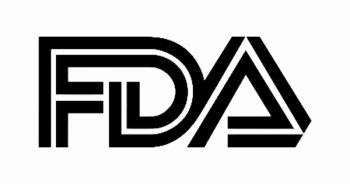
Tolerability and Patient Factors Influence Use of Dual IO in Melanoma
During a live event, Ahmad Tarhini, MD, PhD, moderated a discussion on selection of immunotherapy regimens for patients with metastatic melanoma.
Immunotherapy (IO) options can induce durable responses in patients with BRAF-negative metastatic melanoma. Tolerability concerns have determined the use of IO monotherapy vs combination ipilimumab (Yervoy) plus nivolumab (Opdivo), but with the addition of nivolumab plus relatlimab (Opdualag), the role of monotherapy has been questioned due to its comparable tolerability. In a recent
DISCUSSION QUESTIONS
- Have you used relatlimab/nivolumab for metastatic melanoma?
- Please share your experiences or perceptions of this regimen.
Ahmad Tarhini, MD, PhD: Have you had the opportunity to use nivolumab/relatlimab yet by participation in clinical trial, off clinical trial, or not [at all]?
Yan Ji, MD: I have used it. For first-line treatment for my patients with metastatic melanoma, the experience overall has been very good. Similar to the publication, I have seen some stable disease, some partial response, and 1 or 2 patients had a complete response. Toxicity wise, it's similar to all the IO-induced toxicity we have experienced. But from the study, the grade 3 toxicity is significantly lower compared with ipilimumab plus nivolumab.1
Tarhini: Thank you for sharing that experience. That's consistent with the data from the RELATIVITY-047 study [NCT03470922]. Any thoughts from somebody who has never used nivolumab/relatlimab?
Kurt Demel, MD: I have not had the luxury of using it yet. All of our melanoma cases tend to be seen by 1 or 2 providers in our clinic. I just don't see a wealth of melanoma unless I'm at a satellite clinic. Similar to what Dr Ji just stated, I feel comfortable with it; I just haven't used it yet. The reason that I feel comfortable with it is because I am comfortable in terms of the potential immune-mediated adverse events [AEs], but I haven't used it.
Tarhini: One thing in my experience is the ease of administration. It's a half an hour infusion every 4 weeks. We give 3 doses and do a scan.
Pavan Kumar Bhamidipati, MD: I have used nivolumab/relatlimab, and I choose between nivolumab/ipilimumab vs nivolumab/relatlimab based on their age and performance status, and if they can tolerate the toxicity with ipilimumab. I agree that the toxicity profile is much more tolerable than the ipilimumab-related toxicity. I would try to avoid nivolumab/relatlimab in patients with central nervous system metastases unless they were treated because of those patients were excluded on the initial trial.
Tarhini: In terms of brain metastases, we know that ipilimumab/nivolumab [was investigated in] 2 large studies. They're phase 2, but clearly impactful. The Checkmate 204 trial [NCT02320058] tested ipilimumab/nivolumab and brain metastases and showed a 50% to 55% intracranial response rate.2 The response rate is similar intracranial and extracranially for patients who are asymptomatic and not on or requiring corticosteroids. The ABC study [NCT02374242] in Australia showed similar results.3 The studies are currently ongoing in brain metastases with nivolumab/relatlimab and also with ipilimumab plus nivolumab/relatlimab, the triplet.
DISCUSSION QUESTIONS
What types of patients are you “on the fence” about whether to use IO monotherapy or dual IO therapy?
Rozina Chowdhery, MD: I don't know I would consider using monotherapy anymore. I think the nivolumab/relatlimab data is better in terms of efficacy and the toxicity profile isn't significantly worse. Performance status is my defining factor deciding between nivolumab/ipilimumab and nivolumab/relatlimab. I don't think I would use monotherapy anymore.
Tarhini: And [how do you decide] in terms of choosing between nivolumab/ipilimumab and nivolumab/relatlimab?
Chowdhery: Again, it's based on what toxicities I think that patients can tolerate. I am just more familiar with ipilimumab/nivolumab. They have the longer data to see overall survival and progression-free survival [PFS].4 That’s still my No. 1, if I think someone can tolerate it.
Mohamad K. Khasawneh, MD: I share the same experience with Dr Chowdhery. Monotherapy nowadays is no longer an option because in RELATIVITY-047, [although] the AE profile for nivolumab/relatlimab was numerically higher, but the difference was small, less than 10% on all AEs in favor of nivolumab, but the PFS benefit was higher with the combination.1 Ipilimumab/nivolumab is for the patients who can tolerate it, but I have given ipilimumab/nivolumab even in some patients above the age of 75 and they seem to tolerate it well.
Also, there are published data for patients who take 1 or 2 cycles of ipilimumab/nivolumab and stop, and for some reason, seem to derive good benefit.5,6 These are small series case reports, but I have seen it in my practice. Some patients take the combination, they develop severe grade 3 or 4 AEs, [discontinue after] 2 cycles of the combination, and then some of them continue on monotherapy with nivolumab. They seem to have durable, long-term remissions. That's my experience.
Anand Patel, MD: There's the potential for that tail of the curve if you give ipilimumab/nivolumab, which I think is alluring for these patients. Some of them have that long-term PFS or cure.
If you use ipilimumab/nivolumab up front, you probably have a higher chance of having that patient at the end of the flattening of the curve who's going to be a long-term survivor than if you just use nivolumab. You also can use the nivolumab/relatlimab in the second line, which I've had some success with and good tolerability.
Tarhini: The question is sequencing. It appears that the likelihood of response to ipilimumab/nivolumab is higher in patients whose disease progresses on nivolumab/relatlimab, and it is less likely to respond to nivolumab/relatlimab after ipilimumab/nivolumab.7,8
I think there is much less room for monotherapy. One patient population where I continue to use monotherapy is desmoplastic melanoma. Usually, this is on the head and neck with chronic sun exposure. Desmoplastic melanoma usually has a high mutation burden, and they tend to have a high response rate to anti PD-1 as monotherapy. This was the SWOG 1512 study [NCT02775851], which showed responses upwards of 50% to 60% both in metastatic disease and as neoadjuvant therapy.9 So that's one patient population in which I would use monotherapy. Otherwise, the data are definitive in terms of the superiority of a doublet as compared with monotherapy.
DISCLOSURES: Tarhini previously reported a consulting or advisory role forBristol Myers Squibb, Merck, Genentech/Roche, Novartis, Sanofi/Regeneron, Partner Therapeutics, Clinigen Group, Eisai, Bayer, Instil Bio, ConcertAI, BioNTech, AstraZeneca, and Nested.







































